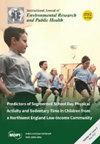二十一世纪的生殖医学格局:为忙碌的临床医生解读男性不育管理的进展
3区 综合性期刊
Q1 Medicine
International Journal of Environmental Research and Public Health
Pub Date : 2024-09-17
DOI:10.3390/ijerph21091222
引用次数: 0
摘要
男性不育是一个重大的全球性问题,对健康、社会和经济都有重要影响。因此,这一领域的科学研究非常活跃,诊断和治疗领域的进展显著也就不足为奇了。这篇综述介绍了男性不育症诊断方面的主要进展,从世界卫生组织最新的《精液分析手册》所做的修改开始,讨论了 "全息 "所固有的更多分子方面的问题。此外,还将讨论人工智能在男性不育诊断中的作用以及精索静脉曲张诊断的最新进展。特别是,男性不育症的诊断方法正日益向个性化方向发展,以寻找不育症的特定生物标志物并预测治疗反应。男性不育症的治疗在很多方面仍然是经验性的,但尽管如此,在帮助制定循证建议方面已经取得了进展。精索静脉曲张是导致男性不育最常见的可纠正病因,目前已探索扩大其修复适应症。会议讨论了以下扩大的适应症:精子DNA碎片升高、性腺功能减退症、睾丸炎,以及精索静脉曲张修复术在非梗阻性无精子症中的作用。在现有数据的基础上,我们讨论了手术取精技术的分步方法,以及在睾丸取精前优化此类患者的现有措施。最后,我们总结了诊断和治疗男性不育症最佳实践的要点和专家建议,以此作为本综述的结尾。本文章由计算机程序翻译,如有差异,请以英文原文为准。
The Andrological Landscape in the Twenty-First Century: Making Sense of the Advances in Male Infertility Management for the Busy Clinicians
Male infertility represents a significant global problem due to its essential health, social, and economic implications. It is unsurprising that scientific research is very active in this area and that advances in the diagnostic and therapeutic fields are notable. This review presents the main diagnostic advances in male infertility, starting from the changes made in the latest WHO Manual of semen analysis and discussing the more molecular aspects inherent to “omics”. Furthermore, the usefulness of artificial intelligence in male infertility diagnostics and the latest advances in varicocele diagnosis will be discussed. In particular, the diagnostic path of male infertility is increasingly moving towards a personalized approach to the search for the specific biomarkers of infertility and the prediction of treatment response. The treatment of male infertility remains empirical in many regards, but despite that, advances have been made to help formulate evidence-based recommendations. Varicocele, the most common correctable cause of male infertility, has been explored for expanded indications for repair. The following expanded indications were discussed: elevated sperm DNA fragmentation, hypogonadism, orchalgia, and the role of varicocele repair in non-obstructive azoospermia. Moving forward with the available data, we discussed the stepwise approach to surgical sperm retrieval techniques and the current measures that have been investigated for optimizing such patients before testicular sperm extraction. Finally, the key points and expert recommendations regarding the best practice for diagnosing and treating men with infertility were summarized to conclude this review.
求助全文
通过发布文献求助,成功后即可免费获取论文全文。
去求助
来源期刊

International Journal of Environmental Research and Public Health
Medicine-Public Health, Environmental and Occupational Health
CiteScore
7.30
自引率
0.00%
发文量
14422
审稿时长
1 months
期刊介绍:
International Journal of Environmental Research and Public Health (IJERPH) (ISSN 1660-4601) is a peer-reviewed scientific journal that publishes original articles, critical reviews, research notes, and short communications in the interdisciplinary area of environmental health sciences and public health. It links several scientific disciplines including biology, biochemistry, biotechnology, cellular and molecular biology, chemistry, computer science, ecology, engineering, epidemiology, genetics, immunology, microbiology, oncology, pathology, pharmacology, and toxicology, in an integrated fashion, to address critical issues related to environmental quality and public health. Therefore, IJERPH focuses on the publication of scientific and technical information on the impacts of natural phenomena and anthropogenic factors on the quality of our environment, the interrelationships between environmental health and the quality of life, as well as the socio-cultural, political, economic, and legal considerations related to environmental stewardship and public health.
The 2018 IJERPH Outstanding Reviewer Award has been launched! This award acknowledge those who have generously dedicated their time to review manuscripts submitted to IJERPH. See full details at http://www.mdpi.com/journal/ijerph/awards.
 求助内容:
求助内容: 应助结果提醒方式:
应助结果提醒方式:


